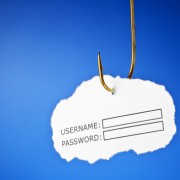Watch Out for Bogus E-mails
The e-mail from your bank gets your attention right away. It says you need to log into your account in the next 48 hours to continue your online privileges. Something about a system upgrade. You wonder, is it legitimate? How can you know for sure?
Bogus e-mails designed to steal your identity, also known as phishing, are becoming a bigger problem these days. While they can take many different forms, most scams are designed to trick you into revealing personal information such as your social security number or online account password. Through clever use of logos and familiar-looking web addresses, these e-mails often appear to be an urgent message from your bank, mortgage lender, or e-mail provider.
You may not realize it, but thieves are especially eager to gain access to your web e-mail account. Why? Once a scammer has access to your e-mails, he or she can often figure out where you bank and detect clues to passwords you might use.
So what can you do to protect yourself? Take a moment and think before you click. Never respond to an e-mail asking for your social security number or birth date. You can almost bet that it is a scam. If an e-mail contains a website link that you are not familiar with, do not click on it. Instead, either go directly to the company’s trusted website, or contact them by phone.
Also remember that e-mail scams become more prevalent following a significant public event, such as a natural disaster or sudden stock market drop. Thieves will prey on your sympathies or fears during these times, so be extra careful when responding to appeals for charity or notices to update your financial records. Also, be leery of e-mails with demanding language or incorrect grammar — both are potential signs of a counterfeit e-mail.
For preventive measures, try to use a different password for every online account, and change your passwords regularly. Make your passwords stronger by using combinations of letters, symbols, and numbers. Also, keep your computer anti-virus software up to date.
Finally, do your part to thwart these crimes by reporting any suspected scam e-mails to reportphishing@antiphishing.org. If you receive a bogus tax-related e-mail, forward it to the IRS at phishing@irs.gov. And of course, feel free to contact our firm if you need a second set of eyes on any suspicious-looking e-mail.







